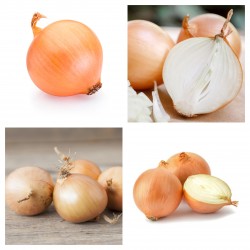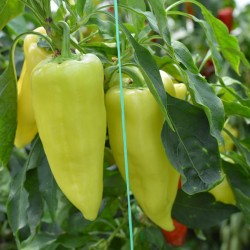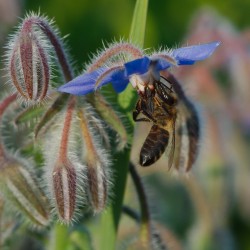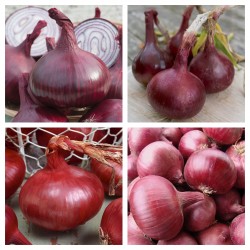Menu
-
MenuTerug
- Home
-
Categorieën
-
-
Categorieën
-
Groentezaden
-
Rassen per land
- Soorten uit Armenië
- Rassen uit BiH
- Rassen uit Kroatië
- Rassen uit Frankrijk
- Varieties from Germany
- Varieties from Greece
- Varieties from Hungary
- Rassen uit India
- Varieties from Italy
- Rassen uit Japan
- Rassen uit Noord-Macedonië
- Varieties from Peru
- Varieties from Russia
- Varieties from Serbia
- Rassen uit Slovenië
- Varieties from Spain
- Varieties from Thailand
- Rassen uit Turkije
- Varieties from USA
- Tomatenzaden
- Maïs zaden
- Kalebas familie
- Bean familie
- Komkommerzaden
- Paprika Zaden
- Wortelfamilie
- Ui familie
- Sla zaden
- Aardappelfamilie
- Kool familie
- Radijs zaden
- Rode biet familie
- Watermeloen zaden
- Meloenzaden
- Bloemkoolzaden
- Zonnebloem familie
-
Rassen per land
- Fruit zaden
- Chili zaden
- Medicinale kruidenzaden
- Klimplanten Zaden
- Bomen - Struik - Zaden
- Palmzaden
- Siergrassenzaden
- Tabakszaden
-
Groentezaden
-
-
-
-
- NIEUWE PRODUCTEN
- Account aanmaken
- Levering - Betaling
- FAQ
- Rassen per land
-
- Soorten uit Armenië
- Rassen uit BiH
- Rassen uit Kroatië
- Rassen uit Frankrijk
- Varieties from Germany
- Varieties from Greece
- Varieties from Hungary
- Rassen uit India
- Varieties from Italy
- Rassen uit Japan
- Rassen uit Noord-Macedonië
- Varieties from Peru
- Varieties from Russia
- Varieties from Serbia
- Rassen uit Slovenië
- Varieties from Spain
- Varieties from Thailand
- Rassen uit Turkije
- Varieties from USA
Laatste product reviews
Out of the two seeds, one germinated and the other one was dead and floatin...
Door
 Riikka H op 07/03/2024
Riikka H op 07/03/2024
geverifieerde koper
Er zijn 439 producten.
Item 436-439 van 439 in totaal item(s)

Variëteit uit Hongarije

Tisza Hongaarse Uienzaden
Prijs
€ 1,75
(SKU: MHS 166)
Seeds Gallery EU,
5/
5
<meta http-equiv="Content-Type" content="text/html; charset=UTF-8" />
<h2><strong>Tisza Hongaarse Uienzaden</strong></h2>
<h2><span style="color: #ff0808;"><strong>Prijs voor Pakket van 50 zaden.</strong></span></h2>
<p>Deze Hongaarse ui is een favoriet in Hongarije als het gaat om vers gebruik, salades, sandwiches, barbecue... Het is Hoogproductieve zomerui voor verse consumptie. De uien zijn groot, hebben een bruin bronzen schil en wit vlees. Middelscherp van smaak en uitstekende winterslaap.</p>
<p>Uien zijn gemakkelijk en goedkoop te telen.</p>
<p>Hoe uien uit zaad te kweken?</p>
<p>Stap 1<br />Zaai 8-10 weken voor de laatste nachtvorst in een zaadcompost. De zaden zijn klein, maar probeer ze ongeveer 1 cm uit elkaar te plaatsen. Bedek licht met een dunne laag compost en zet de pot of bak in water om te bevochtigen.</p>
<p>Stap 2<br />Als de zaailingen enkele centimeters groot zijn, prik ze dan uit en verplant ze in verse compost. Zodra ze zijn gevestigd, verplant je de zaailingen in de tuin, met een tussenruimte van 10-15 cm.</p>
MHS 166 (50 S)


Variëteit uit Hongarije

Hongaarse witte paprika...
Prijs
€ 1,85
(SKU: PP 77)
Seeds Gallery EU,
5/
5
<h2><strong>Hongaarse witte paprika zaden Redei</strong></h2>
<h2><span style="color: #ff0808;"><strong>Prijs voor pakket van 15 zaden.</strong></span></h2>
<p>Middelhoge, laatgroeiende variëteit. De vrucht is gelig van kleur, met een glad oppervlak en een hangende positie. De vrucht is conisch, met een afgeronde top en een gemiddeld gewicht van 170 g.<br />Het vruchtvlees is middelmatig dik en erg zoet.</p>
<p>De plant is sterk en heeft geen speciale verzorging nodig. De plant is zeer resistent tegen ziekten die paprika's aantasten.</p>
<p>Een van de favoriete Hongaarse pepers voor vers gebruik en diepvriezen.</p>
PP 77 (15 S)


Starflower, Borage Seeds...
Prijs
€ 2,25
(SKU: MHS 168)
Seeds Gallery EU,
5/
5
<!DOCTYPE html>
<html>
<head>
<meta http-equiv="Content-Type" content="text/html; charset=UTF-8" />
</head>
<body>
<h2><strong>Starflower, Borage Seeds (Borago officinalis) </strong></h2>
<h2><span style="color: #ff0000;"><strong>Price for Package of 50 (1 g) seeds.</strong></span></h2>
<p>Borage (/ˈbʌrɪdʒ/ (About this soundlisten); Borago officinalis), also known as a starflower, is an annual herb in the flowering plant family Boraginaceae. It is native to the Mediterranean region and has naturalized in many other locales. It grows satisfactorily in gardens in the UK climate, remaining in the garden from year to year by self-seeding. The leaves are edible and the plant is grown in gardens for that purpose in some parts of Europe. The plant is also commercially cultivated for borage seed oil extracted from its seeds. The plant contains pyrrolizidine alkaloids, some of which are hepatotoxic, mutagenic and carcinogenic (see below under Phytochemistry).</p>
<p><strong>Description</strong></p>
<p>Borago officinalis grows to a height of 60–100 cm (2.0–3.3 ft), and is bristly or hairy all over the stems and leaves; the leaves are alternate, simple, and 5–15 cm (2.0–5.9 in) long. The flowers are complete, perfect with five narrow, triangular-pointed petals. Flowers are most often blue, although pink flowers are sometimes observed. White flowered types are also cultivated. The blue flower is genetically dominant over the white flower.[3] The flowers arise along scorpioid cymes to form large floral displays with multiple flowers blooming simultaneously, suggesting that borage has a high degree of geitonogamy (intra-plant pollination).[3] It has an indeterminate growth habit which may lead to prolific spreading. In temperate climate such as in the UK, its flowering season is relatively long, from June to September. In milder climates, borage will bloom continuously for most of the year.</p>
<p><strong>Characteristics and uses</strong></p>
<p>Traditionally borage was cultivated for culinary and medicinal uses, although today commercial cultivation is mainly as an oilseed. Borage is used as either a fresh vegetable or a dried herb. As a fresh vegetable, borage, with a cucumber-like taste, is often used in salads or as a garnish. The flower has a sweet honey-like taste and is often used to decorate desserts and cocktails.</p>
<p><strong>Food</strong></p>
<p>Vegetable use of borage is common in Germany, in the Spanish regions of Aragon and Navarre, in the Greek island of Crete and in the northern Italian region of Liguria. Although often used in soups, one of the better known German borage recipes is the Green Sauce (Grüne Soße) made in Frankfurt. In Italian Liguria, borage is commonly used as a filling of the traditional pasta ravioli and pansoti. It is used to flavour pickled gherkins in Poland.</p>
<p><strong>Beverage</strong></p>
<p>Borage is traditionally used as a garnish in the Pimms Cup cocktail,[4] but is nowadays often replaced by a long sliver of cucumber peel or by mint. It is also one of the key botanicals in Gilpin's Westmorland Extra Dry Gin.</p>
<p><strong>Phytochemistry</strong></p>
<p>The seeds contain 26-38% of borage seed oil, of which 17-28% is gamma-linolenic acid (GLA), the richest known source. The oil also contains the fatty acids palmitic acid (10-11%), stearic acid (3.5-4.5%), oleic acid (16-20%), linoleic acid (35-38%), eicosenoic acid (3.5-5.5%), erucic acid (1.5-3.5%), and nervonic acid (1.5%). The oil is often marketed as "starflower oil" or "borage oil" for use as a GLA supplement, although healthy adults will typically produce ample GLA from dietary linoleic acid.</p>
<p>The leaves contain small amounts (2-10 ppm of dried herb) of the liver-toxic Pyrrolizidine alkaloids (PA) intermedine, lycopsamine, amabiline and supinine and the non-toxic saturated PA thesinine.[6] PAs are also present in borage seed oil, but may be removed by processing. The German Federal Institute for Risk Assessment has advised that honey from borage contains PAs, transferred to the honey through pollen collected at borage plants, and advise that commercial honey production could select for raw honey with limited PA content to prevent contamination.</p>
<p><strong>Herbal medicine</strong></p>
<p>Traditionally, Borago officinalis has been used in hyperactive gastrointestinal, respiratory and cardiovascular disorders, such as gastrointestinal (colic, cramps, diarrhea), airways (asthma, bronchitis), cardiovascular, (cardiotonic, antihypertensive and blood purifier), urinary (diuretic and kidney/bladder disorders).</p>
<p>One case of status epilepticus has been reported that was associated with borage oil ingestion.</p>
<p>A methanol extract of borage has shown strong amoebicidal activity in vitro. The 50% inhibitory concentration (LD50) of the extract against Entamoeba histolytica was 33 µg/mL.</p>
<p><strong>In history</strong></p>
<p>Pliny the Elder and Dioscorides say that borage was the "Nepenthe" mentioned in Homer, which caused forgetfulness when mixed with wine.</p>
<p>Francis Bacon thought that borage had "an excellent spirit to repress the fuliginous vapour of dusky melancholie." John Gerard's Herball mentions an old verse concerning the plant: "Ego Borago, Gaudia semper ago (I, Borage, bring always joys)". He states that "Those of our time do use the flowers in salads to exhilerate and make the mind glad. There be also many things made of these used everywhere for the comfort of the heart, for the driving away of sorrow and increasing the joy of the mind. The leaves and flowers of Borage put into wine make men and women glad and merry and drive away all sadness, dullness and melancholy, as Dioscorides and Pliny affirm. Syrup made of the flowers of Borage comfort the heart, purge melancholy and quiet the frantic and lunatic person. The leaves eaten raw engender good blood, especially in those that have been lately sick."</p>
<p><strong>Companion planting</strong></p>
<p>Borage is used in companion planting. It is said to protect or nurse legumes, spinach, brassicas, and even strawberries. It is also said to be a good companion plant to tomatoes because it confuses the mother moths of tomato hornworms or manduca looking for a place to lay their eggs. Claims that it improves tomato growth and makes them taste better remain unsubstantiated.</p>
</body>
</html>
MHS 168 (50 S)





